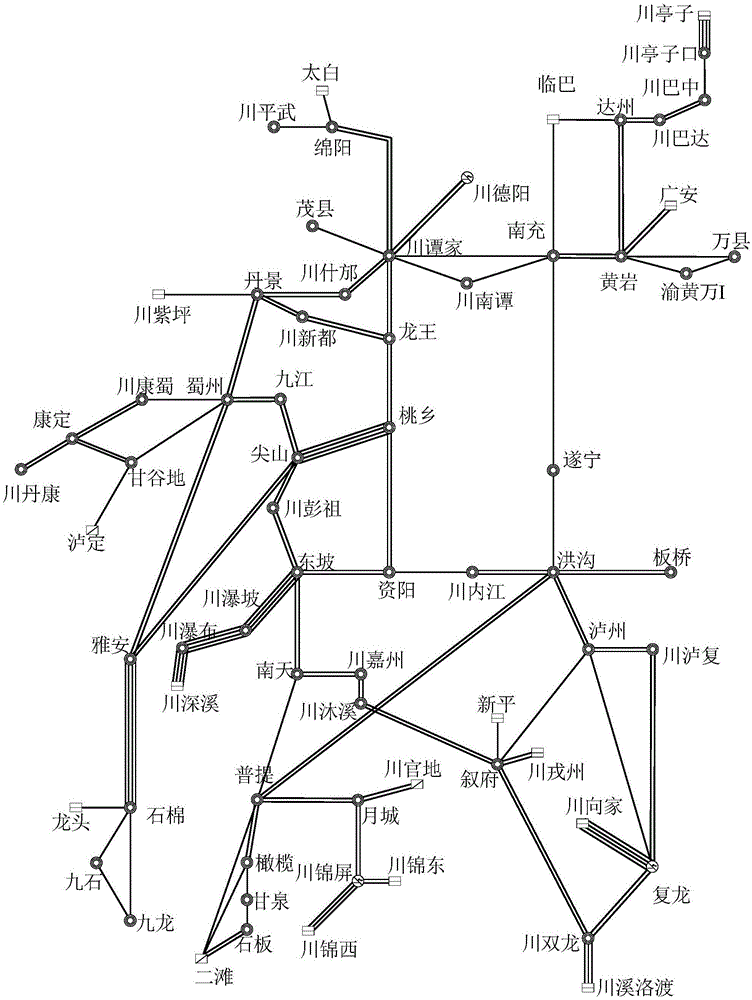Power system transient risk evaluation method taking natural disasters into consideration
A natural disaster and power system technology, applied in the field of evaluation, can solve problems such as component damage, a large number of transmission lines, and time-consuming stabilization calculations
- Summary
- Abstract
- Description
- Claims
- Application Information
AI Technical Summary
Problems solved by technology
Method used
Image
Examples
Embodiment Construction
[0060] The present invention will be described in further detail below in conjunction with the accompanying drawings.
[0061] The present invention provides a kind of power system transient risk assessment method considering natural disaster, (such as figure 1 ) described method comprises the following steps:
[0062] Step 1: Determine the probability of component damage considering natural hazards;
[0063] Step 2: Identify a preliminary set of faults and classify them;
[0064] Step 3: Conduct a transient risk assessment of the power system.
[0065] Described step 1 specifically comprises the following steps:
[0066] Step 1-1: Divide natural disasters into Type I natural disasters and Type II natural disasters;
[0067] Steps 1-2: Determine the component damage probability considering Type I natural disasters and Type II natural disasters, respectively.
[0068] In the step 1-1, type I natural disasters include typhoons, icing and earthquakes;
[0069] Category II n...
PUM
 Login to View More
Login to View More Abstract
Description
Claims
Application Information
 Login to View More
Login to View More - R&D
- Intellectual Property
- Life Sciences
- Materials
- Tech Scout
- Unparalleled Data Quality
- Higher Quality Content
- 60% Fewer Hallucinations
Browse by: Latest US Patents, China's latest patents, Technical Efficacy Thesaurus, Application Domain, Technology Topic, Popular Technical Reports.
© 2025 PatSnap. All rights reserved.Legal|Privacy policy|Modern Slavery Act Transparency Statement|Sitemap|About US| Contact US: help@patsnap.com



